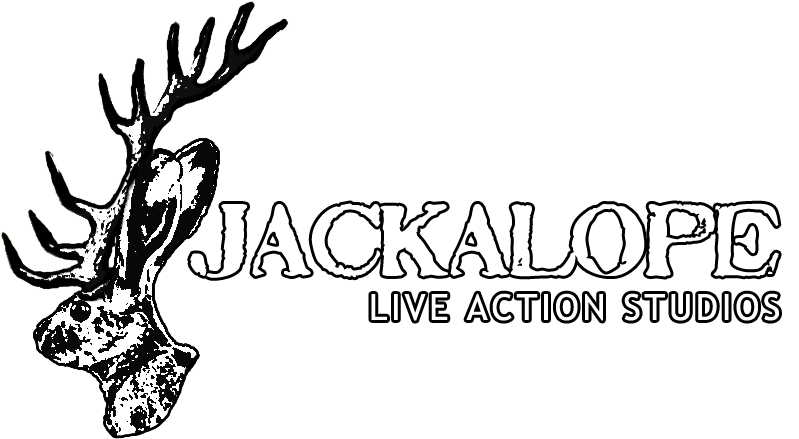You are going to be stepping into a live action role-playing event that delves into emotional material. Some of it may touch on traumatic events, or deal with uncomfortable subject matter. Some of it might be horrific and disturbing. We have an urge as humans to deal with this kind of fiction, to interact with the dark parts of our world, to come to terms with it. But as we play in a collaborative shared space, we need to be confident we are exploring safely in a way that helps everyone.
We want the freedom to play hard, to go after the shadows and rabid wild dogs of the human experience. And we gain that freedom by using tools that let everyone communicate where their limits are; to give permission and gain permission to go farther than we might otherwise.
Signals
At Jackalope, we use a short list of signals to communicate between participants, to make it so we can quickly calibrate the situation while keeping the action moving with a minimum of interruption.
#1: Check-In
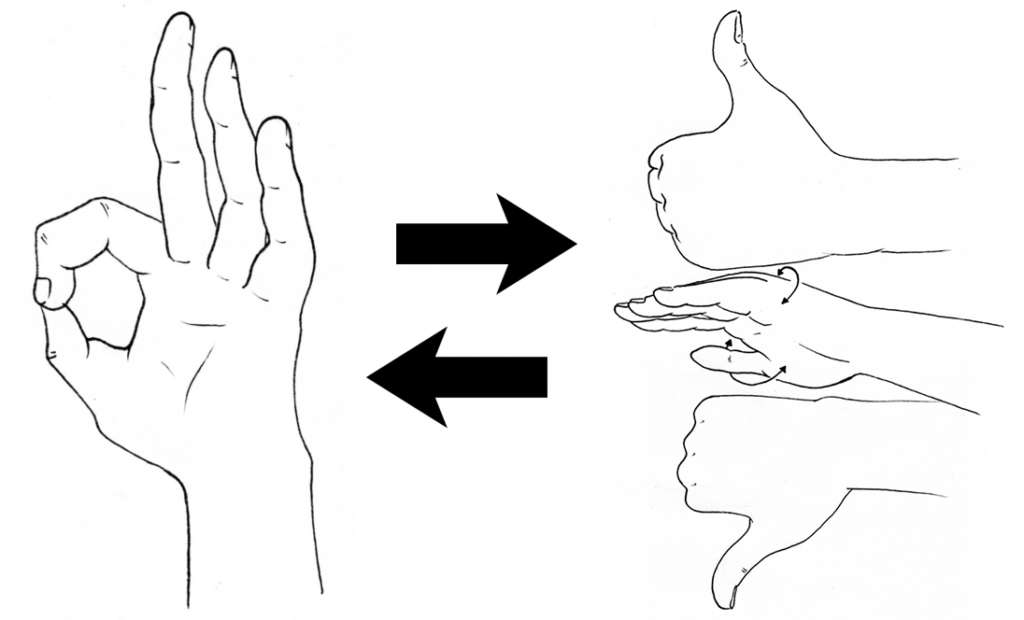
“Are you okay?”
Chris is playing at a LARP, crying and sobbing on the ground as someone holds a knife over them. You find yourself wondering – is Chris just a really good actor, or is Chris actually scared out of their mind? You are a good person, so you want to make sure.
You could break into the scene and say, “Time out, Chris, are you all right?” But breaking the scene would mean interrupting play, which means you now have an obstacle between you and checking in on your fellow participant. So instead, we use the Check-In signal.
How to Use the Check-In Signal
- The concerned participant makes the OK sign to the participant where they can see it. Typically, in the middle of their torso.
- The participant being checked in on…
- …responds with a thumbs up. Play proceeds uninterrupted
- …responds with one of the alternate responses. Play stops, out of character discussion occurs. Play may proceed but only after adjusting and negotiating. Read more below.
- …does not respond. Play stops and it is treated as a thumbs down.
Participants can also give the responses on their own without anyone checking in.
Responses
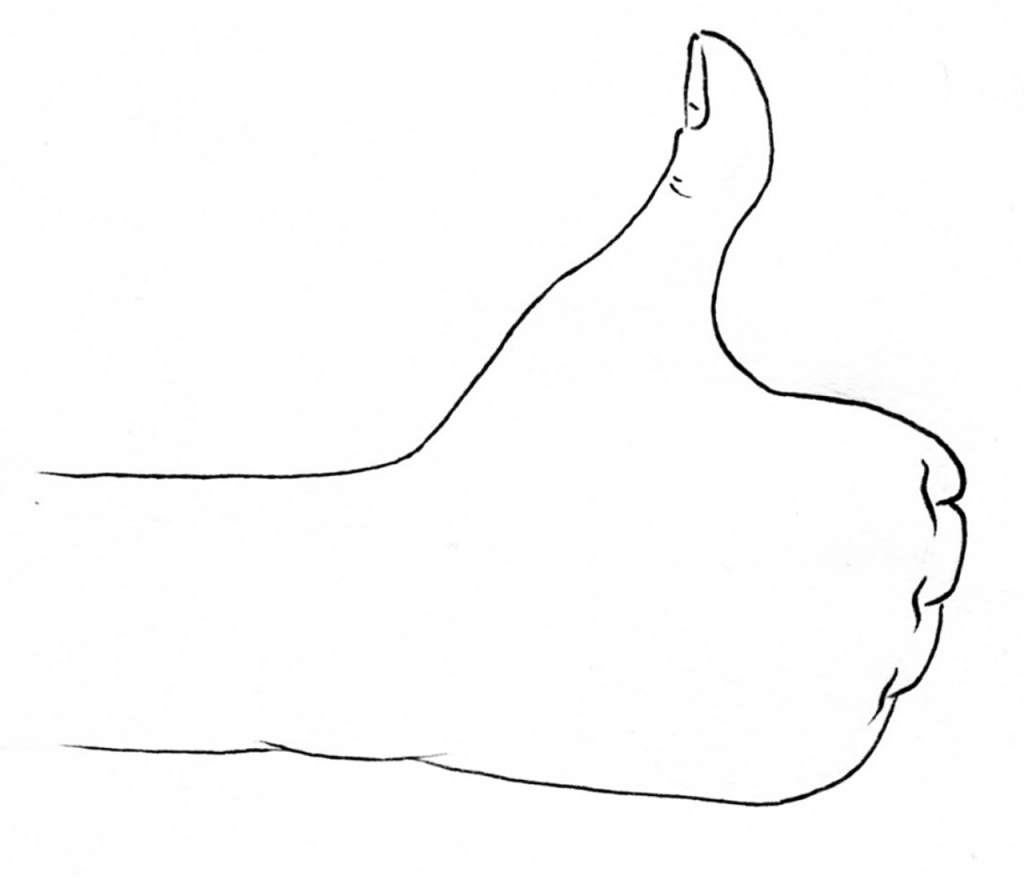
” I am okay.”
A thumbs up means the participant is confidently fine with how the scene is proceeding. Continue without interruption.
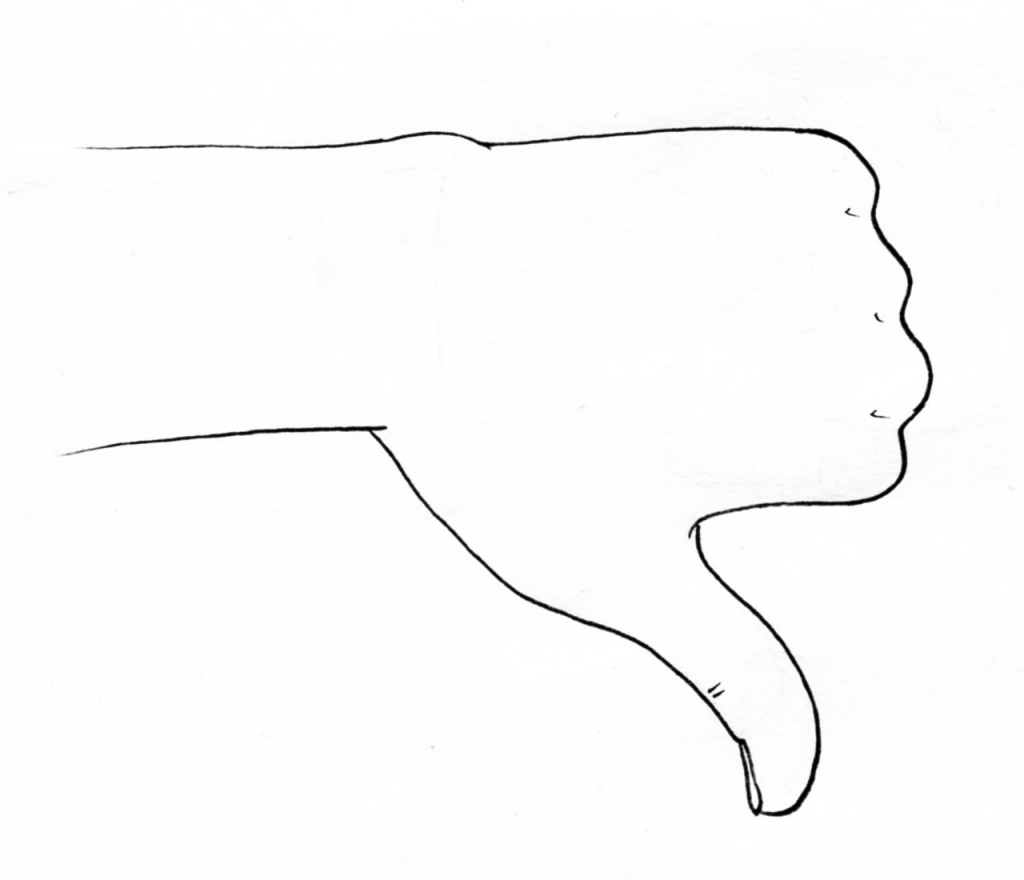
” I am not okay.”
A thumbs down means the participant is not okay with how this scene is proceeding. Play should stop immediately. If someone throws a thumbs down to you, you should ask them if they’d like to be taken to an OOC area, how can you help them or if they need anything. The ‘not okay’ player should be the only one who initiates negotiation to continue, and should not even be asked to do so.
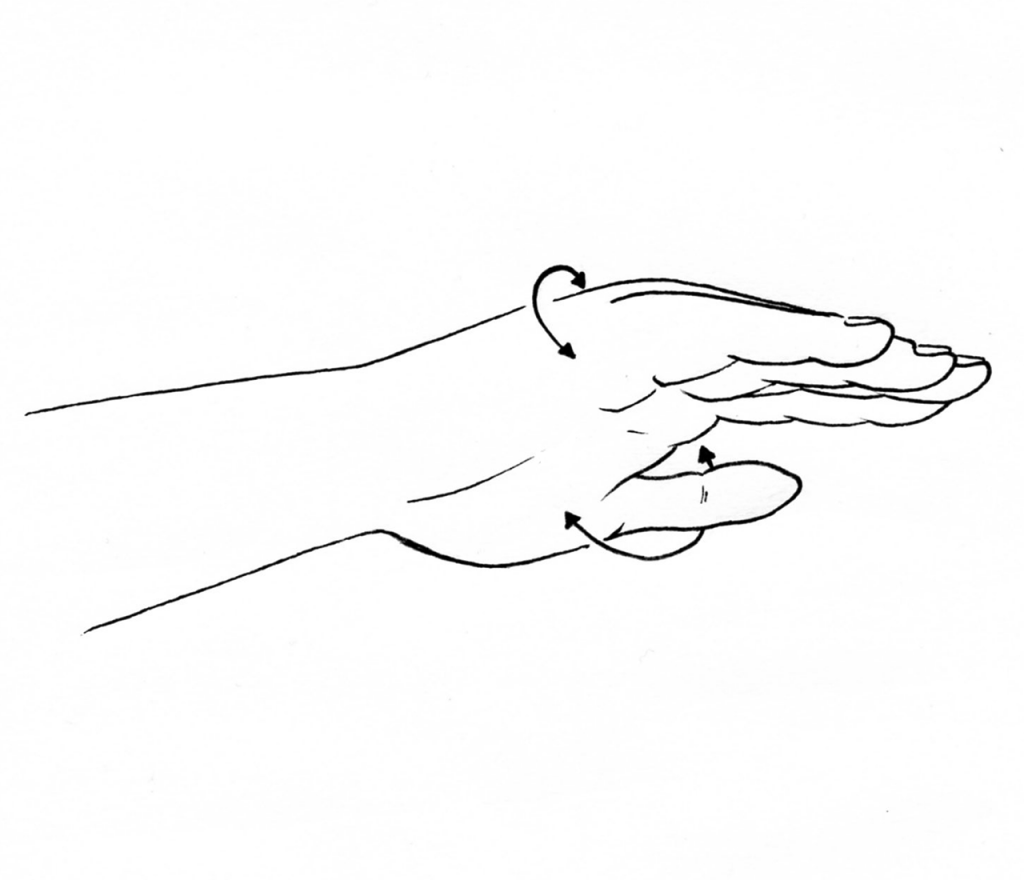
“I’m not sure if I’m okay.”
The so-so sign should be treated like a thumbs down until you’ve spoken to the participant. Play pauses, and the participant is asked if they are all right and if there is something that needs to change, including the scene ending. With the participant’s consent, play can resume adjusted as they requested. With anything other than an enthusiastic and clear consent to proceed with specific changes, the scene stops.
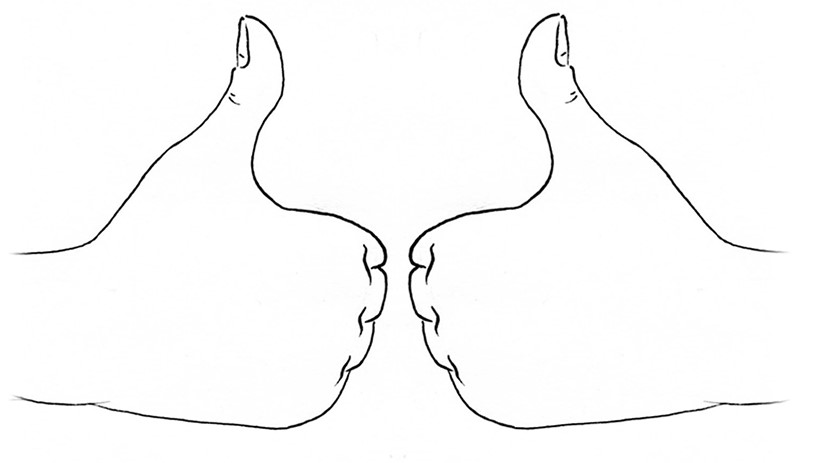
“This is great! Turn it up a notch!”
The double-up means that the participant loves how the scene is playing out and would be fine with going further with the emotional intensity. You aren’t obligated to do so, but it indicates they are willing to go further down this path. A double-up does not interrupt play, and you should take it as an invitation to go further, not permission to go as far as you want without checking in any more if you think you should.
If you are unsure where to go next or how far you should go, remember to use the negotiation tools below.
Verbal Check-Ins
If someone is unable to use the full range of gestures (e.g. does not have use of their hands, is handcuffed), is unable to see them (e.g. has a visual impairment, is blindfolded), or otherwise – always check-in verbally and use the same rules (“Out of character, are you okay?” and take anything but a firm yes as a play stopper). The gestures are meant as an easy solution that does not break scene – but no scene is more important than making sure your fellow player is okay.
“Cut” or “Break” is a Verbal Thumbs Down
A player can say “cut” or “break” any time to signal that they need the scene to end and they are no longer consenting to the content. Proceed as if there was a check-in and it received a thumbs-down. This call is often accompanied by a slicing motion to the neck, but that is not required.
If you are not central to the scene but would like to no longer participate, see the Bow Out gesture below.
Consent and the Check-In
Getting a thumbs-up or a double-up never means that a person has no limits. Just that you have not reached them yet. It also does not mean their limits will not change during a scene; or over the course of an event. It is still your duty to your fellow participant to check-in should you get the sense something is going wrong.
Credit: The check-in technique is attributed earliest to Aaron Vanek and Kirsten Hageleit as players at Melodramatic Mysteries in 2010. Similar gestures are in use elsewhere in the community, and seems to have developed simultaneously. The Jackalope four-response check-in builds on the work of Participation Design Agency.
#2: Bow Out

“I have to leave this scene for out of character reasons.”
You are in the middle of a scene where characters are dealing with one of their parents dying. You recently lost a loved one, and you find yourself reacting. You want to leave, but do not want the other participants to think your character is leaving or deal with the consequences. But you have to leave because you cannot handle the content OOC. So you bow out.
How to Bow Out
- Put your hand on the back of your head
- Tilt your head slightly downward
- Quietly leave the scene
The bow-out is a clear signal that the participant is excusing themselves from the scene, not the character. When you see a participant bow out, you should not comment or act on that information in character. If you are concerned for a participant, bow out yourself and check-in with them. Participants who bowed out of a scene can rejoin it if they wish.
If you are very central to a scene, it is better to use the thumbs down gesture from the Check-In to bring the scene to a halt, or use the “cut”/”break” verbal signal. Either will stop the scene.
Credit: Bow Out was originally developed by Matthew Webb and Riley Seaman for the science fiction LARP Planetfall. Other variants exist, including the “See No Evil” gesture created by Johanna Koljonen, which we do not use since it conflicts with the Block signal.
#3: Block
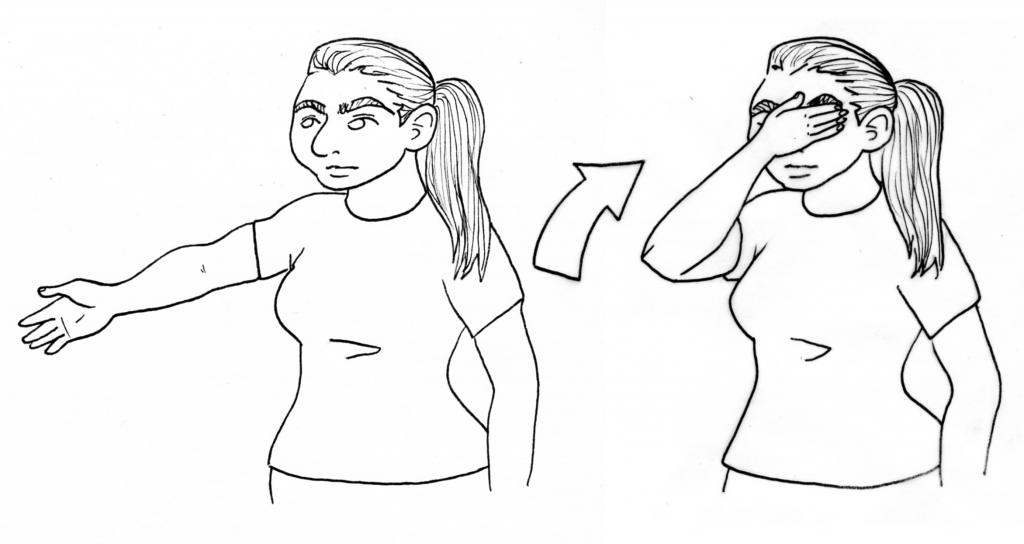
“Please don’t make me deal with this.”
Jessica is using a switchblade prop weapon in the LARP. Playing a hardened criminal, she is using it to gesture and emphasize points during a conversation. Greg does not like knives and it is disturbing him out of character. He’d like to continue the scene but would like Jessica to stop playing with it during the conversation. He decides to put a block on the knife.
How to Block
- Requesting participant should gesture with an open hand toward the element you wish to block. If necessary, say one or two words to clarify – e.g. “Knife”, “Fire”, “Cigarette smoke”
- Requesting participant puts the same hand to block their eyes briefly.
- Responding participant removes or reasonably minimizes the participant’s contact with the item in question.
The Limits on Blocking
Blocking is there to make minor adjustments to a scene for everyone’s comfort. Sometimes blocking is very straight forward. In the above example, Jessica puts the knife in her pocket and does not take it out for the rest of the scene. Some things are not so simple.
If someone is playing a border guard with a rifle, they cannot be expected to discard it when the rules require they hold it. But they can not point it or brandish it towards the participant who asked for a block. It is beholden on the asking participant not to make it difficult to honor their request.
Sometimes you cannot block broader scene elements and need to bow out from the scene. A club with loud music or a military truck with a large gun on it cannot really be blocked.
Credit: Block was developed by Matthew Webb for the A War of Our Own event.
On inappropriate use of signals
It can be tempting to abuse the power to leave scenes, avoid consequences or push others to adjust their play. If you feel that someone else is doing this, it is never your job to confront them about it. Contact the event staff and voice your concerns, and they will be deal with the situation.
If you feel the use of signals allowed someone to intentionally or unintentionally avoid the consequences of their actions in a way that detracts from the event, bring this up with the staff. If necessary, a narrated outcome will be put in place, if the staff feels it is necessary for the event.
Verbal Signals
There are short set of verbal signals we use in events, which are meant to bring all participants in ear shot in line. They are most useful to ensure physical safety where time is of the essence, or everyone in earshot should change their behavior now.
“Caution.”
You see Jim walking backwards while talking during a scene. He steps out onto the grass, right towards a fire ant mound. While you may or may not like Jim’s character, Jim is a fellow participant and you look out for him. You say, “Caution – fire ants behind you.” Jim hears this and adjusts his path, then the scene resumes.
When you say “Caution” followed by a description of what you are cautioning them about, it should be taken as an OOC signal that is quickly acted upon and play resumes normally. This is a way of quickly letting someone know they could hurt themselves or others.
“HOLD!” & “GAME ON!”
Sam is climbing up a ladder quickly in a scene with a lot of people running. She loses her grip on the ladder and falls down onto the ground where people are running around. A staff member shouts “HOLD!”, and everyone within earshot stops what they are doing, stands still and shouts “HOLD!” as well. The staff member moves over to make sure Sam is all right. It turns out the only thing bruised is her ego. The staff member calls, “3 – 2 – 1, GAME ON.” Everyone resumes doing what they were doing.
Whenever anyone shouts “HOLD!”, you stop where you are, break character and repeat the shout. Follow the instructions of staff or if they aren’t there to help immediately with the situation, do what you can to help your fellow participants.
“9-1-1!”
While heating up lunch, Nathaniel knocks the propane burner he was using off the table by accident. It lands in a pile of papers, lighting them on fire. Nathaniel shouts, “9-1-1! Fire! 9-1-1 Fire!” Everyone within ear shot breaks character, repeats the shout and goes to help if they can.
This is the most serious call, and the one most rarely used. Shouting “9-1-1!” indicates there is a real emergency that requires attention. The reason we do not use calls like “Medic!” or “Emergency!” is that these might be interpreted as in-character. The 9-1-1 Call is clear in meaning (to us Americans, it is the emergency services number) while being distinct.
Credit: 9-1-1 was developed as the emergency call by Riley Seaman for the LARP Planetfall.
Illustrations by Rooklight Illustrations.
Negotiation and Care
To quote the eminent and incredibly talented LARP designer Johanna Koljonen –
“People are more important than LARPs.”
Let me repeat that –
“People are more important than LARPs.”
Everyone got that? Good. That means the person behind the character and the story is always more important than the story or the character itself. You need to remember that person – whether it is another participant, a staff member or yourself. Taking care of the person is always more important than the LARP.
Here are our guidelines for playing hard and safe, while remembering the person.
Warnings and Negotiating
It is always acceptable to break character, warn and negotiate. It is required to negotiate before touching, rough-housing or otherwise engaging in contact with a character. Some powers during some games might also require negotiation. The signal for going out of character is to hold up two crossed fingers and say, “Negotiation.”
How to quickly negotiate during an event
- The requesting participant raises two crossed fingers and say, “Negotiation” and then a short reason why you are opening the subject. Examples include: “Violence”, “Intimacy”
- The responding participant says, “Negotiation,” echoes the opening reason,with their limits and then asks what the initiator wants to do. Example: “Negotiation, violence. I am fine with stage-fighting but please no running. What would you like to do?”, “Negotiation, intimate contact. Touching of shoulders and face only What would you like to do?”
- The requesting participant explains what they’d like to do: “I would like to touch your face”, “I would like to stage-wrestle you to the ground”
- The responding participant either responds with questions or other ideas.
- Negotiation concludes only when both sides say, “Agreed.” and lower their fingers.
Touching a player, rough housing or otherwise engaging in contact always requires negotiation, and should be part of the combat resolution process when we use resolution then action violence system, where the result of a violent conflict is determined and then played out.
The Pyramid of Action

Whenever performing any negotiated action in the game, consider these three factors in order:
- Safety. Do you feel safe doing what you are doing? Do the other people involved feel safe? Is it safe?
- Consent. Is what you are doing what you are agreed to? Is what you are doing what others have agreed to? Is it within the content limits of the game that everyone agreed to?
- Collaboration. Does what you are doing help the game and move forward everyone’s story? Does it enrich the experience of the game and increase the immersive experience?
Remember, unsafe play is not allowed even if it is consented to. And even if you think a particular action might move the story forward, it must be consented to.
Caring for yourself and others
Sanctuary Space
A sanctuary space will often be available at the game site The sanctuary space will have places to sit down, rest and recuperate, as well as snacks and water. If you are in need of a break or find yourself not able to handle the situation, bow out and visit the sanctuary space. If you need an escort or help finding it, approach a staff member or ask a fellow participant. If someone asks you for help, always try and give it.
Care for yourself
You are more important than the game. Remember to regularly assess yourself, your mental state and your physical well-being. Do not do stunts or other dangerous things that put you or others in danger. Your well-being is more important than the LARP.
Here is a good self-care checklist, if you start feeling out of sorts.
Self Care Checklist
- When was the last time I drank water, or something hydrating? Soda and coffee do not count.
- When was the last time I ate something?
- When was the last time I sat down and rested?
- Am I in physical pain? Do I need pain meds?
- (if applicable) When is the last time I had caffeine/a cigarette/etc.?
If you need any of these things, the sanctuary space or a staff member should be able to help you.
Care for your fellow players
If you see another participant who seems to be out of it, out of breath, not entirely present – use the check-in method to see if they need help. There is never a penalty or judgment for breaking character to find out if another participant needs help, or helping them to the sanctuary space or giving them physical care.
Hey, can I reproduce this/use this at my own games/use as a handout?
Jackalope Live Action Studios LLC gives any non-profit LARP organization or sole proprietor game owner the right to print and distribute physical copies of these guidelines and the images, unaltered, for the purposes of education or implementing these signals in their games. All copies must be clearly titled “The Jackalope Guide to LARPing Hard and Safe” and attributed as “by Jackalope Live Action Studios, www.jackalope-larp.com”. This does not include permission to reproduce or copy the content digitally.
They may not be used as part of any for-profit venture, including paid consulting or for-profit LARP events, without written permission from Jackalope Live Action Studios.
Websites may link freely to this page to educate their players.
All content, including logos and images, remain the sole property of Jackalope Live Action Studios.
